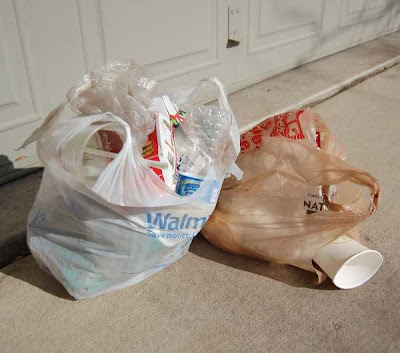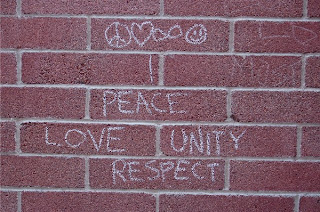In the"Zug Island" post on this blog, I used the phrase "environmental abuse." It is something all too common – even now, when we live in a supposedly more enlightened, "green" era.
Zug Island is back in Detroit, where I used to live. Another instance of environmental abuse there happened about twenty years ago.
Now, I admit that the story I'm telling here is way old. I haven't lived in Motown for years, and it is possible that what I'm about to describe has been settled to the betterment of all, especially the environment.
Now, I admit that the story I'm telling here is way old. I haven't lived in Motown for years, and it is possible that what I'm about to describe has been settled to the betterment of all, especially the environment.
As with Zug Island, it goes beyond the issue of littering – at least at first glance. I think it's all part of a larger issue.
 |
| Note the predicted year of Earth's demise. |
The story at hand concerns an incinerator built by the City of Detroit in the late 1980s. There was a lot of concern it would belch massive amounts of filthy, perhaps toxic crud into the air.
Breathe deep.
One day a lot of people showed up to demonstrate their displeasure with this monstrous facility, seen in the background in the above photo.
I showed up too – in part to demonstrate my displeasure, and in part to get what I hoped would be some interesting photographs.
I managed to do both.
Like I said, it's been many years, and some of the details escape me. The protest must have got some advance publicity, based on how many demonstrators showed up.
There were quite a few cops on hand, too, protecting the integrity and good name of the incinerator.
Note the Greenpeace banner at far left.
The two sides watched each other for a while. I suppose each viewed the other as an enemy, or opponent.
See that cop on the left with her hands behind her back? I always imagine her saying, "Jasper? I don't much like the looks of this crowd."
The crowd was angry but peaceful. See the kids in the little red wagon in the foreground? No matter how committed, no parent would bring small children to an event like this if there was a chance of violence.
Assuming they weren't nuts, that is.
Inevitably, some of the demonstrators had to demonstrate something.
See the photographer at left? I had a crush on her. I used to go to many public events like this, wherever I sensed good photo ops – and there she would be. I never learned her name, or even where she worked. It was just one of those, "Ooo, there's that cute woman again!"
Yes, I was still single then.
Meanwhile, the cops said, "Oh, no you don't!" and moved in.
Looks like my would-be girlfriend got some good shots.
At least one person got arrested. I wonder what she did?
Things began to get a little crazy at this point. Note the object of my desire in the center of the picture, in sunglasses.
Even though there were a lot of Detroit cops with guns and billyclubs and the authority to arrest people, I sensed no danger.
In fact, I had a lot of fun, holding up my camera and shooting wildly.
For a while it was like slam dancing.
Say no more.





























